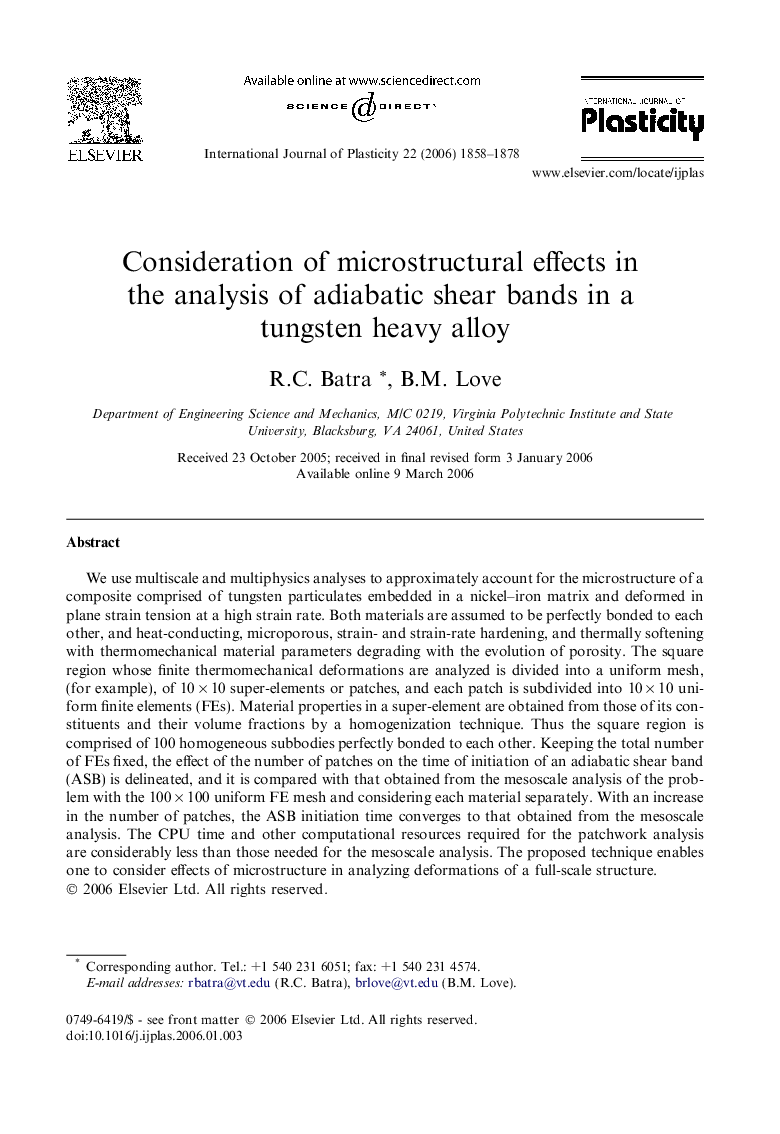| Article ID | Journal | Published Year | Pages | File Type |
|---|---|---|---|---|
| 786387 | International Journal of Plasticity | 2006 | 21 Pages |
We use multiscale and multiphysics analyses to approximately account for the microstructure of a composite comprised of tungsten particulates embedded in a nickel–iron matrix and deformed in plane strain tension at a high strain rate. Both materials are assumed to be perfectly bonded to each other, and heat-conducting, microporous, strain- and strain-rate hardening, and thermally softening with thermomechanical material parameters degrading with the evolution of porosity. The square region whose finite thermomechanical deformations are analyzed is divided into a uniform mesh, (for example), of 10 × 10 super-elements or patches, and each patch is subdivided into 10 × 10 uniform finite elements (FEs). Material properties in a super-element are obtained from those of its constituents and their volume fractions by a homogenization technique. Thus the square region is comprised of 100 homogeneous subbodies perfectly bonded to each other. Keeping the total number of FEs fixed, the effect of the number of patches on the time of initiation of an adiabatic shear band (ASB) is delineated, and it is compared with that obtained from the mesoscale analysis of the problem with the 100 × 100 uniform FE mesh and considering each material separately. With an increase in the number of patches, the ASB initiation time converges to that obtained from the mesoscale analysis. The CPU time and other computational resources required for the patchwork analysis are considerably less than those needed for the mesoscale analysis. The proposed technique enables one to consider effects of microstructure in analyzing deformations of a full-scale structure.
